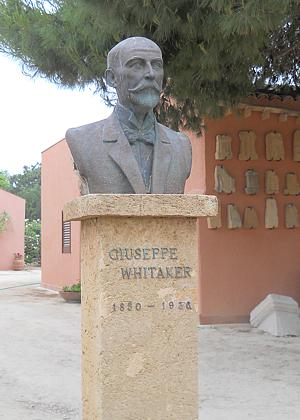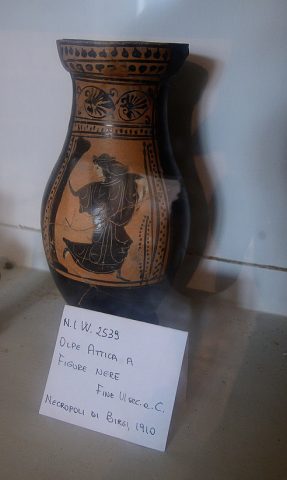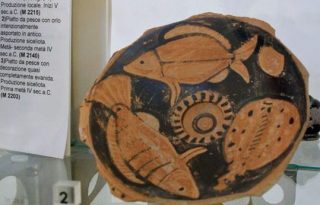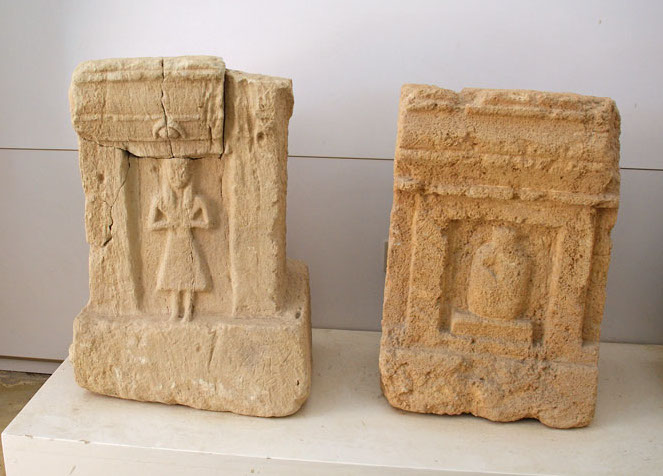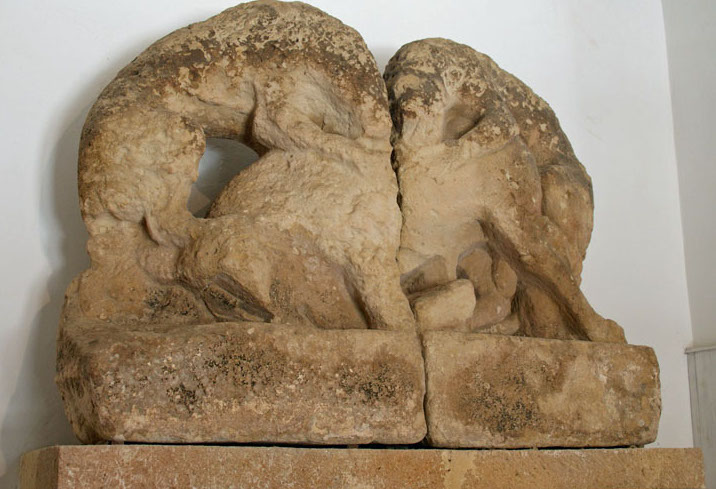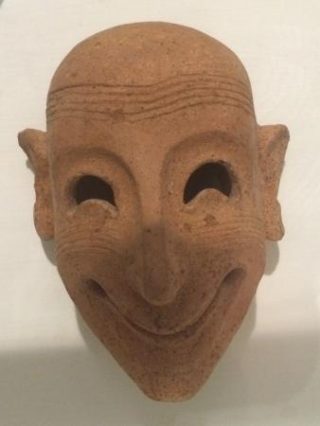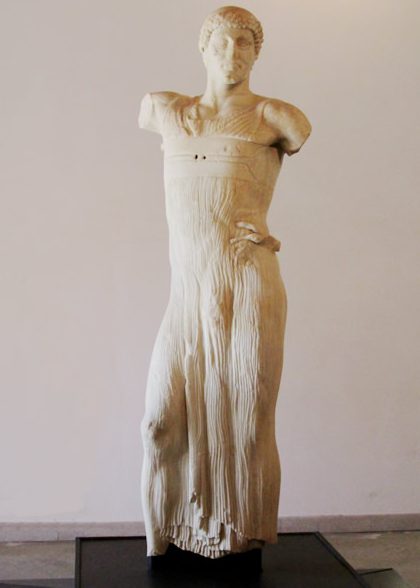Whitaker Museum
The small museum in Motya, originally built at the beginning of the 20th century for Giuseppe Whitaker‘s will, keeps architectural pieces, coins, sculptures, jewels and other finds from ancient and recent excavations on the island, in Lilibeo and in the Birgi necropolis. It also collects casual finds, donations and purchases.
The ceramic section of Motya Museum
The oldest ceramic specimens coming from the ancient necropolis of Mozia are three oriental vessels with thin strips and red lines dating back to the 7th century BC.
There are also several Phoenician-Punic Vases for domestic, ritual and funeral uses. Vases have the most varied forms.
The vases were manufactured on the same island with clay from Lilibeo and generally their decorations were very simple.
Types of pottery in Motya Museum
– pitcher= one-handed pot;
– amphora (pl. amphorae) – one of the most common forms in Greek pottery, has various shapes, always with two vertical neck-handles. Used for storing and transporting oil, wine and foodstuffs such as olives.
– olle, bowl-shaped vase with a handle attached to the belly, mostly of clay, for domestic use or used as cineraries;
– jars, similar to the amphora, but with greater capacity. It has approximately cylindrical shape, which narrows towards the mouth. It can have handles to facilitate transportation;
–oinochoe, used to pour wine and other liquids. Similar to broccavary in the shape of the body and the mouth;
Protocorin and Corinthian kinds of vases
A showcase of Motya museum is occupied by Protocorin and Corinthian vessels, such as:
– skyphos (pl. skyphoi) – deep cup or bowl with two handles near the rim;
– lekythos (pl. lekythoi)- used to store fine oils and perfumes, dedicated in burials and decorated in reference to this function, often with a white background;
– aryballos (plural aryballoi) small spherical or globular flask with a narrow neck which was used to contain perfume or oil;
– lebete, bronze or other metal basket used in ancient Greece and in Etruria for sacred ceremonies and domestic uses. It was usually mounted on tripod or conical supports;
– alabastron (pl. alabastra) – a small jar for storing perfumes, named after the material (alabaster) the first examples were made from;
The aryballoi and alabaster shown inside the Museum with depictions of animals, birds and wrestlers belong to the VII sec. and beginning of VI century.
Style of decoration
Black-Figure Style Decoration: Invented in Corinth, this style from Attica became the dominant style in Greek pottery. Figures were painted in black with details such as muscles and hair engraved using a sharp instrument.
Red-figure Style Decoration: The style is characterized by red figures on a painted black background.
In the excavations of Mozia and at the Birgi necropolis some black and red figure attic vessels came to light.
There are some lekythoi. A black figure (560-530 BC) depicts Heracles fighting a lion. The other in red figures depicts a woman leaning on a tall stick. The rich collection of black painted pots and red figures comes from the Birgi necropolis.
Glass jars shown in Motya Museum
A showcase of the Museum keeps the small masterpieces of Phoenician glass art, such as some alabastra.
They are small Egyptian vessels with round or cylindrical body, used to hold ointments or oil.
Coins
In the museum there is a collection of coins. Around the middle of the fifth century Mozia as well as the Greeks used to make bronze and silver coins on which were symbols, figures, women’s heads, images reminding of Punic legends.
They likely depicted on the coins deities such as Tanit or Astarte.
Sculpture
In the field of sculpture the oldest examples are some naos cipps, sandstone blocks placed in the tophet in memory of an offer or a sacrifice.
Inside the Museum we can see the huge sculptural group in limestone. It was on the North Gate, riproducing a bull crushed by two lions.
A statuette depicting a woman sitting with a baby in her arms, found in Lilibeo, came from trading with the Italian population.
There are some sculptures like statuettes and terracotta heads depicting Demetra and Core and some ceramic protomas found in the sanctuary of Baal Hammon.
They had to exercise an apotropean function, to divert malignant influences.
I so love the funny terracotta grinning mask from the late 6th century BC with its nice smile
The young of Mozia
During the excavations conducted in 1979, archeologists found a white statue of a young man in the K area. The marble statue had to reach the height of about two meters.
According to most scholars, the statue dates back to the second century BC, more precisely to the period between 475 and 450 BC. It is realistic to believe that this masterpiece comes from a Greek city of Sicily, Selinunte or Agrigento.
The auriga (charioteer) has its head slightly inclined and its face wrapped in a curly hairstyle. The missing arm is facing upwards and probably had a whip. He appears to be in the gesture to lead victorious his chariot and he is wearing a chitone. This is a common garment in ancient Greece. It is light, very long and with thin bends, tightened by a belt at the height of the pectorals and highlighting the beautiful anatomical shapes and muscles, in particular in the back. The chitone envelops the body with an extraordinary effect of transparency and set the statue into the artistic environment influenced by the art of Fidia.
The statue of the auriga dominates the room with the skylight, right in front of the entrance, which was the Whitaker backyard.
On the occasion of the London Olympics the Parthenon Hall of the British Museum exhibited the statue until September 2012 . Apollo Stangford, coming from the same London Museum replaced him, as a cultural exchange. After two years around the world the statue returned to Mozia.
Jewelry
A valuable set of finds consists of many jewels and some scarabs, imported from Egypt, with which Punic women used to adorn themselves.
The Museum shows a gold medal depicting at the top a winged sun symbol of divine, in the central part a disk symbol of eternity, at the bottom a disk between two snakes, animal healers.
There are medals with magical value and also bracelets, rings, amulets, earrings, and necklaces made of colored glass globes. They have various colours. Pendants had magical function more than ornamental. In the necropolis of the island they also found some jewelry.
Inside the museum there are still weapons, amulets and scarabs, objects with the original captions, cosmetic or surgical instruments, and many common items that document the many aspects of everyday life.
source:
Motya by La Medusa Editrice
http://www.fondazionewhitaker.it/mozia.html
wikipedia
